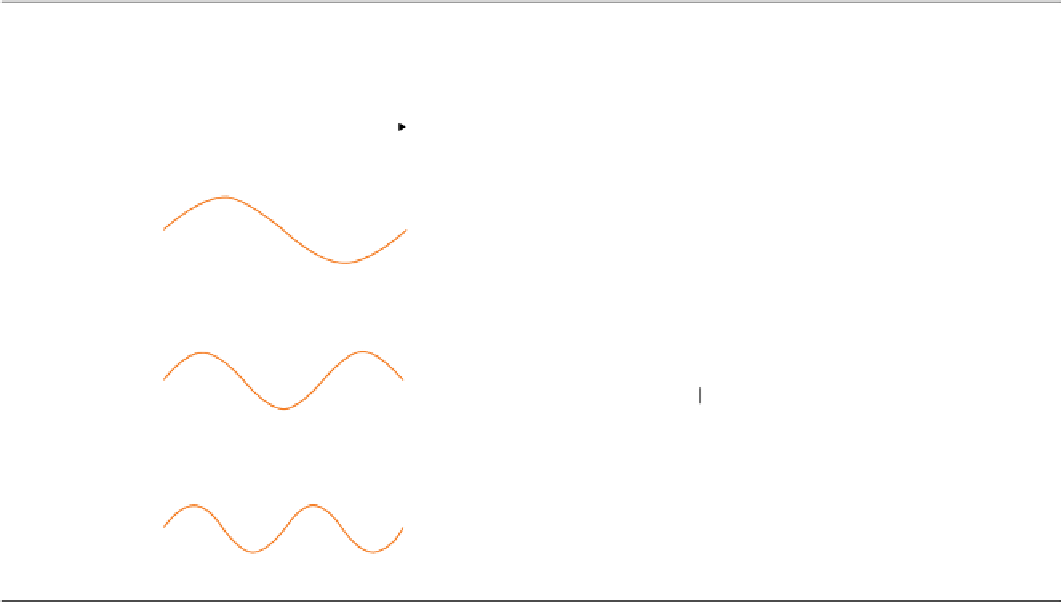Geology Reference
In-Depth Information
P
A
1
1
υ
0
Fundamental
y
½
λ
1
x
A
2
T
First harmonic
One octave
2
2
υ
0
N
P
λ
2
P
A
3
T
Octave plus
a fifth
Second harmonic
3
3
υ
0
N
N
λ
3
A
4
T
Third harmonic
Tw o octaves
4
4
υ
0
N
NN
P
λ
4
T = Touch position
P = Pluck position
N = Node
A
n
= Amplitude of harmonic
n
Figure 5.2
The harmonics of a plucked string. To obtain such harmonics on the guitar, the player touches the string lightly at the
appropriate nodal point (identified as T), whilst plucking it sharply near to the other end (point P). The finger at T is removed
immediately after plucking. The idea is to establish a nodal point at T while allowing the string to oscillate along its entire length.
Table 5.2
Parallels between a vibrating string and an atomic orbital
Stationary wave on a guitar string
Electron in an atom
Nature of wave
Wave in one dimension (along string).
Extent of wave is restricted by fixed ends.
Three-dimensional wave (orbital) around nucleus.
Spatial extent of electron standing wave is restricted by the
electrostatic pull of the nucleus.
Stationary states
One quantum number (
n
) is sufficient to
define stationary states:
n
= 1 fundamental
n
= 2 first harmonic
n
= 3 second harmonic
Four quantum numbers (
n, l, m, s
*) are required to define all possible
electron stationary states in an atom;
n
and
l
are the most
important.
l
= 0
1 s
2 s
3 s
4 s
l
= 1
-
2p
3p
4p
l
= 2
-
-
3d
4d
l
= 3
-
-
-
4f
n
= 1
n
= 2
n
= 3
n
= 4
Significance of wave
function
Wave function =
y
(lateral displacement
of string)
Perceived quantity
∝
'loudness'
Wave function =
ψ
(psi)
Physical significance:
ψ
2
= probability of finding the electron at
(
x, y, z
) = 'electron density' at (
x, y, z
)
*
n
= principal quantum number
l
= angular momentum quantum number
m
= magnetic quantum number
s
= spin quantum number



























































Search WWH ::

Custom Search